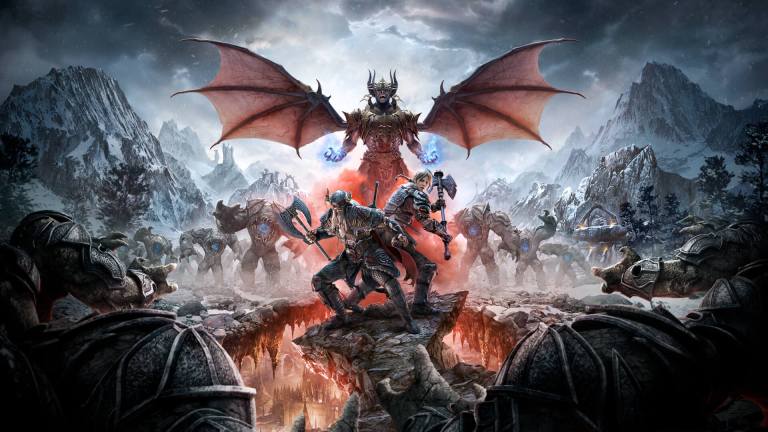5 Things The Elder Scrolls 6 and Starfield Engine Needs to Improve
If The Elder Scrolls 6 and Starfield are going to fix Bethesda's Creation Engine, then they'll need to feature at least these five improvements.

At the Develop: Brighton keynote session, Bethesda’s Todd Howard stated that the studio is developing overhauls to their controversial Creation Engine which could represent the biggest leap in technology that we’ve seen from Bethesda since the transition from the Xbox generation to the Xbox 360 era.
“It’s taken us longer than we would have liked, but it’s going to power what we’re doing with Starfield and Elder Scrolls 6, and when people see the result, they’ll hopefully be as happy as we are with what’s on the screen, but also in how we can go about making our games,” Howard said. “So the overhaul in our engine is the largest we’ve probably ever had, maybe larger than Morrowind to Oblivion.”
While it’s easy to look at a statement like that and immediately jump to general conclusions like “better graphics” and “fewer bugs,” we instead suspect that Howard is talking about addressing fundamental shortcomings with Bethesda’s Creation Engine which have impacted the way the studio handles core design concepts. Specifically, we can think of at least five improvements that Bethesda needs to make to their game engine before the release of Starfield and The Elder Scrolls 6.
Raise the Framerate Cap
One of the biggest overall issues with the Creation Engine is the way that it ties its physics system and other key components to a 60 FPS cap.
If you try to play a game like Fallout 4 above 60 FPS (even if you only raise the cap by a couple of frames) one of two things will likely happen. Either the game will straight up crash (which is very common) or the physics of the game will rapidly speed up in a comical and confusing manner.
While Bethesda RPGs aren’t the titles you typically think of when you’re touting the virtues of high FPS gameplay, we are entering an era of 1440p and 4K gameplay that naturally demands more frames-per-second. Limiting so many core components of an engine to a 60 FPS cap will also limit the next-gen capabilities of future Bethesda titles.
Rework Load Times
Yes, open-world Bethesda RPGs have historically suffered from long load times. However, the simple presence of an SSD will likely greatly reduce the amount of time you spend staring at a traditional load screen. We’re already seeing that in tests of backward-compatible Bethesda titles.
The real problem with the Creation Engine’s load times is how it processes and conveys parts of an environment. There’s some debate on this subject, but the popular consensus is that the Creation Engine features a somewhat reworked carry-over of the same environmental loading process seen in older Bethesda RPGs. Needless to say, that process hasn’t aged well.
This is another one of those Creation Engine issues that fundamentally affect the efficiency of the engine and how it’s able to handle more demanding tasks that will become more common in the next generation.
Expanded Environmental Interactions
Have you ever played a Bethesda RPG like Fallout 4 or Skyrim after playing many modern open-world titles and just felt like something was…off? Well, it might have something to do with the way that Bethesda RPGs offer very few ways to interact with your environment such as climbing and realistic terrain distinctions.
While it’s been said that the lack of features such as those in previous Bethesda games can be attributed to Bethesda’s creative decisions, we’re reaching a point where even the most powerful character you could possibly create in a Bethesda RPG just feels fundamentally incapable of effectively navigating their environment.
So whether this is an engine shortcoming or a design decision, it’s something we want to see Bethesda address in the next generation.
More Dynamic Character Movements/Animations
Speaking of little touches that make Bethesda games feel outdated, the animation and movement systems featured in the studio’s iconic RPGs has been in desperate need of an overhaul for quite some time.
It’s easy enough to forgive animation anomalies that are ultimately funny, but as Bethesda tries to expand the combat systems in their RPGs, it’s becoming clear that the Creation Engine’s sluggish movements and stiff animations are incapable of effectively conveying the proper sensations of your actions.
Again, you could argue that this slower style was more deliberate in the past, but it no longer feels like that’s the case, and it’s time for Bethesda to adapt.
Improved Open-World Building Through Seamless Design
If there’s one thing that Bethesda needs to address in the next-generation, it’s the way that they build open worlds and the way that their game engines process them.
To better illustrate this point, picture a cave in an open-world game. In a title like The Witcher 3 or even World of Warcraft, you usually walk into the cave from the open-world and walk back into the world from the cave. There are some exceptions to those examples in the case of larger dungeons, but in Bethesda series like The Elder Scrolls, even transitions into simple caves and interior environments typically involve a disruptive loading process.
Yet, the issue here isn’t exactly load times so much as it is the way that the Creation Engine processes every element of an environment and how it connects those elements. This is also why so many natural features in Bethesda worlds look decidedly unnatural and as if they don’t quite belong with the rest of the environments.
